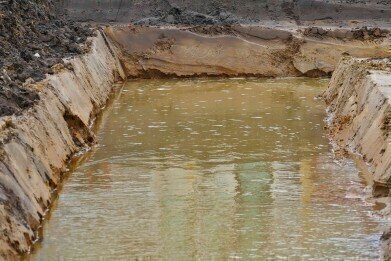Water/Wastewater
Where Are Micropollutants Found?
Jul 03 2022
If you’re an environmentalist, a germophobe or simply keep a keen interest in current affairs, you may well be familiar with the term micropollutants. Referring to substances which are emitted into the environment as a by-product of (usually human) everyday processes and products, micropollutants have been making waves in scientific circles in recent years due to the potentially damaging implications they carry.
That’s because although these chemicals, hormones, heavy metals and other substances are leached into the natural world in extremely small concentrations, they have the ability to persist there for a very long time. That allows them to bioaccumulate, thus eventually reaching dangerous levels and compromising the health of the flora and fauna around them. But where exactly are they found? We take a look at five of the most common destinations for micropollutants in the natural world.
Air
Air pollution is a hot topic at the moment, with the UK government struggling to meet targeted thresholds despite introducing a raft of measures to do so. Many of the micropollutants emitted into the air through transport, industry, energy generation and other anthropogenic activities are classed as contaminants of emerging concern, meaning little is known about them. The same is true for the other sources listed below.
Soil
Most of the micropollutants which are leached into soil come from agriculture or industry. Regarding the former, the widespread use of fertilisers, herbicides and pesticides has become instrumental in producing enough food to feed the world’s ballooning populace – but the chemicals (such as nitrogen, phosphate and ammonia) contained therein can compromise soil quality. Meanwhile, industrial discharge can often contaminate soil samples with heavy metals such as mercury, too.
Surface water
The aforementioned soil contamination can become washed into surface water sources, such as streams, rivers and lakers. This generally happens after periods of heavy precipitation, when agricultural run-off pollutes the waterways surrounding crop fields. However, wastewater effluent is also a common culprit in contaminating surface water, since current practices in many wastewater treatment plants are insufficient to deal with the issue.
Groundwater
As well as running off into surface water sources, contaminants in soil can sink through and leach into underground aquifers. Since this is the source from which much of our drinking water is drawn, this poses a theoretically grave problem for humans as well as animals and plants. Once groundwater sources become thus contaminated, it’s virtually impossible to remove the offending substances due to their remote location.
Wastewater
As mentioned above, wastewater is a chief contributor to the micropollutant problem. That’s because household, corporate and industrial waste can contain a wide variety of heavy metals, chemicals, hormones, pharmaceuticals, oestrogens and other potentially damaging ingredients, which are washed down the plughole and into the sewer. Because our methods of filtration are not yet sophisticated enough to deal with them, they are then released back into the environment.
Digital Edition
IET 34.2 March 2024
April 2024
Gas Detection - Biogas batch fermentation system for laboratory use with automatic gas analysis in real time Water/Wastewater - Upcycling sensors for sustainable nature management - Prist...
View all digital editions
Events
Apr 30 2024 Melbourne, Australia
Apr 30 2024 Birmingham, UK
May 03 2024 Seoul, South Korea
May 05 2024 Seville, Spain
May 06 2024 Minneapolis, MN, USA


















